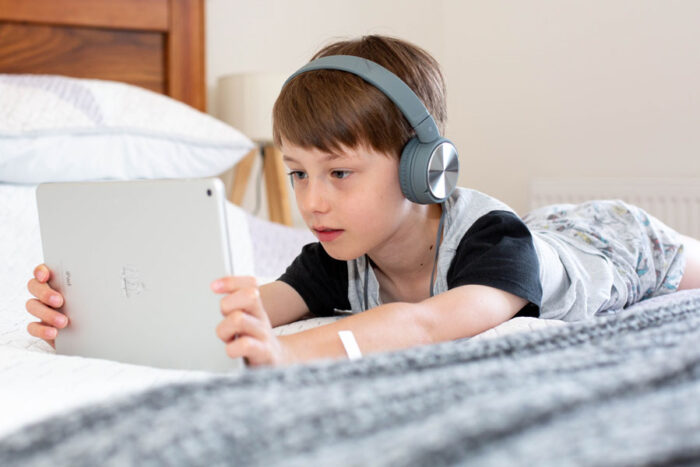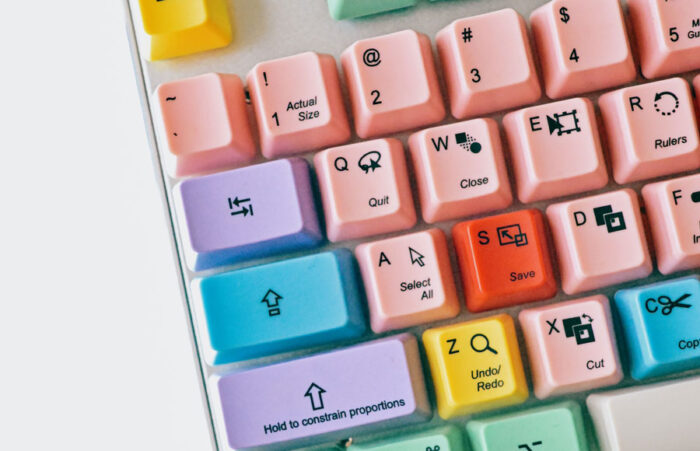
For the dyslexic student, or indeed anyone who finds committing words to paper a slow and laborious activity, touch typing can be liberating and sometimes even life changing. I am a huge advocate of students learning to touch type, regardless of whether they have a diagnosed learning difference or not, as the benefits are huge. But how easy is it to get your child proficient on a keyboard; what are the learning options available; and what are the cost implications?
I taught a wonderfully bright dyslexic boy in Year 4 several years ago. He simply couldn’t get his ideas down on paper and was persistently falling behind with this work. This boy couldn’t read his own indecipherable handwriting, so didn’t know what he had to learn or what he had to do for homework. I suggested he do some intensive touch typing courses. Over several school holidays and within 6 months (with a huge amount of effort and practice), he was typing at 60 words per minute. This totally transformed his learning as he was then able to: use his laptop in class; type at the same speed as the teacher was speaking; write stories with greater ease; improve spelling and overall confidence.
The obvious benefit of touch typing is the speed with which you can commit your thoughts to paper, speeding up all written work, homework and thinking ahead. Touch typing uses ‘muscle memory’, training the muscles of your hands to remember where each finger goes for each letter. Students who struggle with spelling often find this easier once they can touch type. They also make use of the spelling and grammar auto-correct functions. Once touch typing becomes automatic, it frees up the brain’s capacity to focus on what is being written rather than the actual mechanics of writing.
Although there are no hard and fast rules, according to Caroline Bateman of Achieve Now, the optimal age is from Year 5 onwards. This is due to a number of overlapping factors such as better dexterity, pressure to produce larger volumes of written work and cooperation of the student.
Most online programmes start from age 7 or 8 (Year 3), but learning this new skill requires dedicated practise and repetition. This can of course be fairly boring, so it’s worth bearing in mind that the student needs to be old enough to take this on board and practise. If a student becomes proficient before secondary school, all the better, but it is never too late to get going as it’s also a useful life skill.

Some schools now run their own programmes. But more often than not, students need much more practice than what is available during the school day. There are many online options for parents to choose from but here are some of the most popular:
Two of the most popular programmes specifically designed for dyslexic students include:
• Nessy Fingers: £30 per year*
An award-winning programme designed for students aged 7-12. It teaches the keys in alphabetical order and from a low level of 4 words per minute to ensure success. It uses real words to improve spelling and you can even add your own homework spelling words. The programme also incorporates fun games to increase motivation.
• Touch-Type, Read and Spell: Prices vary according to number of users but start from £9.99 per month for one student*
British Dyslexia Association assured, TTRS uses an Orton-Gillingham-based approach to typing. It features a multi-sensory programme of phonics that builds reading and spelling ability, along with computer skills. TTRS is appropriate for learners aged 8+ to adult and caters for different ability levels. It’s self-paced and can be customised to meet the needs of every learner. From those on the autistic spectrum to learners with visual or hearing impairment, and students who struggle with dyslexia, dyspraxia or attention based difficulties. It is animation and game free, which, on the one hand minimises distractions, but can prove to be a little dry for younger students.
Additionally, there are myriad free online programmes for all students including programmes like BBC Dance Mat and Typing Club. Some are more games based and animated for a younger learner, while others focus purely on repetition. All are able to monitor progress and advance the learner, as long as the student is motivated.
This is when all the good intentions of following the recommendations on an assessment report fall by the wayside.
Some students who would benefit hugely from touch typing simply don’t get to a level of proficiency that is enough to keep up in class and with homework. Schools have their own policies on what constitutes a sufficient typing speed to be using a laptop in a lesson. Students certainly need proficiency and technical ability to ensure their laptop use is not disruptive to the flow of the lesson and that they can keep up at the same pace as their peers.
To ensure your child quickly achieves a sufficient level of ability in touch typing to help them access schoolwork in a speedy, stress fee manner, it may be worth looking at other/additional options.

Cost: Approx. £50 per hour*
There are many dyslexia centres across the country that provide touch typing classes and courses. One we know well is The McLeod Centre for Learning in Pimlico, central London.
Key details:
• Weekly touch typing classes on an hourly basis or intensive holiday courses available (next one 31st May – 4th June, £60 per 1.5 hr session. Session times are 9.00 – 10.30 & 10.45 – 12.15).
• Using dyslexia specialists and the Touch Type Read Spell (TTRS) programme. You are asked to subscribe to TTRS for one month (£9) and buy a gooseneck holder (£12) so teachers can see the student’s face/hands/keyboard if doing virtual lessons. Pupils share their screen with the teacher.
• They recommend that it usually takes about 7 or 8 hours to learn the keyboard. Building up speed may take anything from one month to one year, depending on amount of practice, age, existing bad habits, or learning and processing difficulties.
Additional skills:
• As a specialist centre they have trained SEN teachers for dyslexia support and can also provide morning school sessions to cover literacy and maths.
• The centre also provides subjects up to A level; Art; Coding; Counselling; Dyslexia assessments; Homework support; Languages; OT; and Yoga, as well as handwriting and touch typing.
Amanda McLeod is a handwriting expert and the author and Series Consultant of ‘Scholastic’s Handwriting‘ series Reception to Year 6. Whilst they are a touch-typing centre, they also value automaticity of handwriting skills and offer handwriting lessons with specialist teachers.
Cost: Approx. £220 per week course*
If you are not in Central London, or near a specialist dyslexia centre, online courses may be a better option. Highly effective courses that run during most school holidays are now offered online by Caroline Bateman of Achieve Now.
Key details:
• Caroline’s courses are a mixture of intensive online teaching structured throughout the week, plus private practice and they are reasonably priced.
• The cost includes an external WebCam and keyboard that students keep, plus delivery costs in the UK. User accounts on multiple typing programs, intensive tuition and supervised typing practise.
• Caroline’s aim is to get the students to a level of being able to type their homework after the initial course, so students see the immediate benefits of learning this life skill.

Cost: Starting at £85 per hour*
We recently came across a brilliant touch typing tutor who works with London schools and private students, tailoring her lessons to the individual. She has been a touch typing tutor since 2010, using exercises and a syllabus she’s developed herself.
Key details:
• Lessons are tailored to the individual learner, via Zoom or in person if requested in central London
• Usually one hour per week, with a short practice routine set for homework
• Students can achieve good proficiency in 20-25 lessons, and of course the more they practice, the quicker they will progress
• Tailored syllabus that incorporates games and online websites
Additional skills:
• Organisational skills including how to set their computer; create folders and correctly save files; email work to teachers; and print
• Creative writing and learning to enjoy expressing themselves
There are many options available for helping your child to learn to touch type. Some children will be perfectly fine learning independently online. But for others, specific instruction and ongoing support may be key to learning this useful life skill.
Touch typing has the potential to transform a child’s academic life and subsequently their future career. If it’s been recommended on your child’s assessment report, please do consider it as a very wise investment for their future.
For details on any of the above providers, please do not hesitate to contact me or click the links provided.
Sarah Cox, SEN Consultant
*Prices true at time of print but may be subject to change. Please speak to the individual providers for more information.